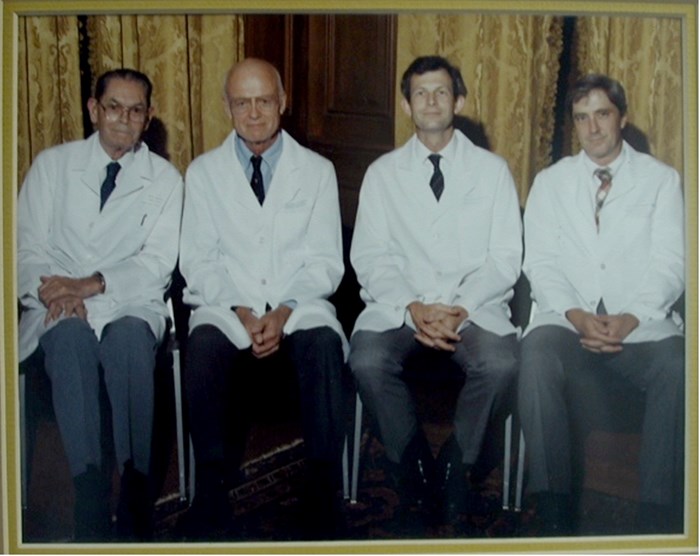Celebrating 50 years of excellence and innovation

The Division of Plastic and Reconstructive Surgery at Emory University is an example of how the residents trained by Emory and the education it provides have built it into the program it is today. The division was started in 1971 when the new surgery chair, W. Dean Warren, MD, recruited his friend, Maurice J. Jurkiewicz, MD, from the University of Florida Department of Surgery to become plastic surgery chief at Emory. Remarkably, both men would go on to serve as American College of Surgeons president.
"Dr. J," as he was affectionally known, served as chief for 22 years and produced a premier clinical, educational and investigational program, and in the process helped shape the field of reconstructive surgery. His legacy is measured through the accomplishments of the men and women he trained who later became leaders in the field themselves. When Dr. J retired in 1993, one of his young proteges, John Bostwick, MD, followed him as division chief. Dr. Bostwick was the linchpin for building one of the greatest academic plastic surgery programs in the nation – he was a pioneer in the use of the latissimus flap as well as immediate reconstruction in the treatment of breast cancer. In addition, Dr. Bostwick authored a seminal work, Aesthetic and Reconstructive Breast Surgery. Future The PSF President Stephen Mathes, MD, and Foad Nahai, MD, were graduates of the training program and leaders in the development of the musculocutaneous flap, and in 1979 they published the definitive textbook Clinical Atlas of Muscle and Musculocutaneous Flaps. Dr. Nahai would become one of the most highly regarded plastic surgeons in the world – he's made innumerable contributions in reconstructive as well as aesthetic surgery.
T. Roderick Hester, MD, joined the faculty in 1979. A talented and versatile surgeon, he started an aesthetic surgery center that would become the Emory Aesthetic Center. After Dr. Bostwick's untimely death, Dr. Hester became the division chief in 2002 and strengthened Emory's aesthetic surgery training by merging his private practice into the resident training program. The division continued to attract top applicants from across the country and, today, the division has an alumni base of 160 plastic surgeons who've become specialty leaders in their own right.
Grant W. Carlson, MD, assumed the chief position upon Dr. Hester's retirement in 2010, with Albert Losken, MD, continuing as program director. Under their watch, the program has continued to grow and strengthen – aided by the addition of an integrated residency program to compliment the independent program, as well as more faculty members and clinical rotations to provide services and educate the now-18-resident complement. Emory continues its contributions to breast surgery advancement with such highlights as the refinements to skin-sparing and nipple-sparing mastectomy introduced in the 1990s, and the expansion of the oncoplastic approach to partial breast-reconstruction introduced in the 2000s.
Emory educators today include the core faculty as well as clinical faculty from greater Atlanta, many of whom are Emory alumni. The craniofacial experience at the Children's Healthcare of Atlanta is headed by Joseph Williams, MD, who runs a craniofacial Fellowship and a multidisciplinary team. Children's Healthcare also is one of the nation's busiest craniofacial centers.
Emory University Division of Plastic and Reconstructive Surgery is well-positioned to build on its tradition. The residents and alumni are who make Emory plastic surgery what it is today. They continue to raise the bar and make a difference in their communities. The key to Emory plastic surgery's success is an example of Dr. J's original vision on education: When you bring the right group of people together to learn, they'll learn from one other and their knowledge will grow exponentially.
Dr. Carlson is Emory's plastic surgery division chief; Dr. Losken is Emory's residency program director.